
Commanders!
Today, we’d like to return to the topic of BVP M-80A Premium AFV, which was announced more than a year ago. Back then, we mentioned that it would become a prize for the Age of Rage Battle Path but its model was not ready on time, there were some balance issues and, as a result, the vehicle was shelved for quite a while.
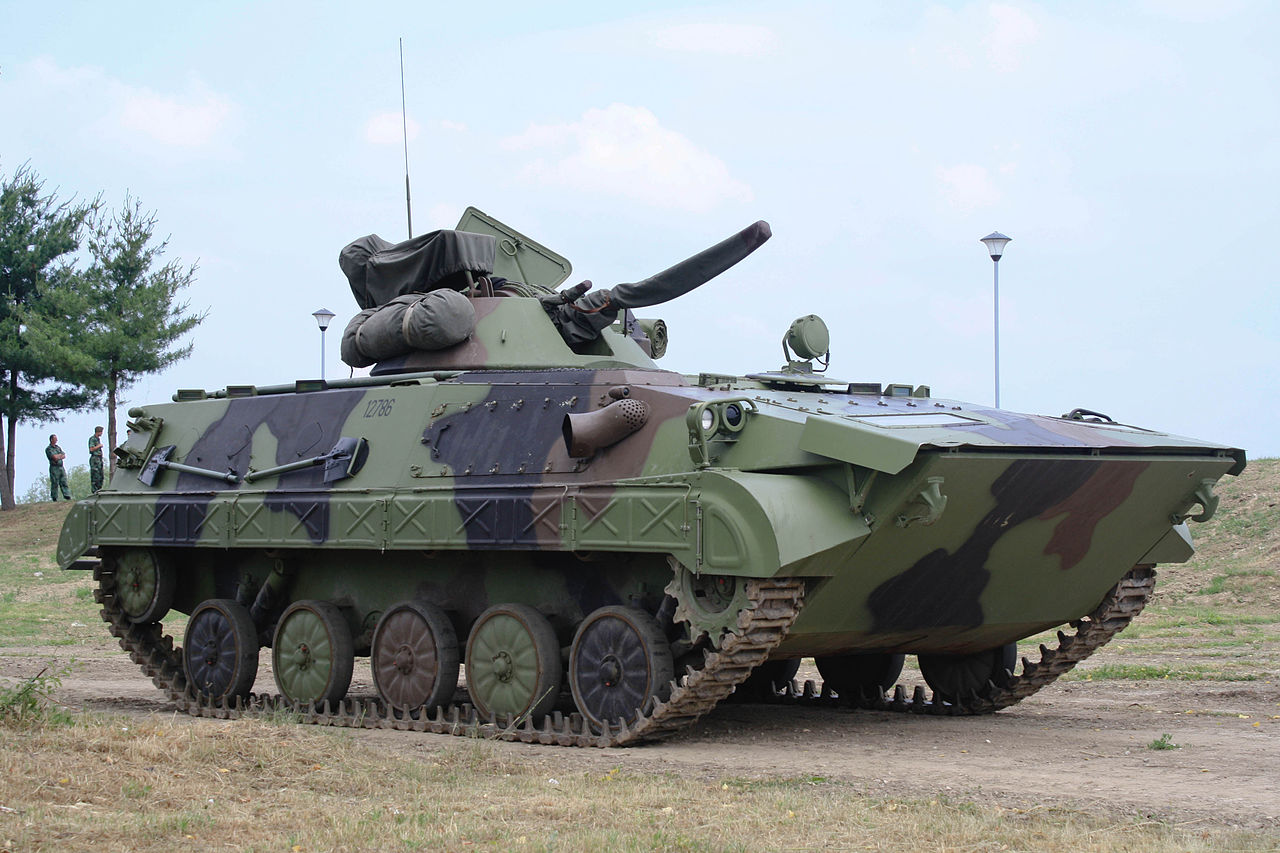
BVP M-80A
However, we’re now happy to report that this AFV will be appearing in Update 0.33. One major change that we did is that, as we announced previously, the BVP M-80A is now a Tier 5 Premium AFV instead of Tier 4 – some of its modules and abilities were very difficult to balance for Tier 4 and Tier 5 does seem like a suitable place for it.
Let’s look a bit into its history:
At first glance, the Yugoslavian BVP might seem like a slightly different copy of the Soviet BMP series but the truth is, under the surface, the vehicle was very different and had little to do with its Russian counterpart. This might seem strange – after all, Yugoslavia was a socialist country, why would they not adopt the BMPs the Soviets and the Warsaw Pact countries were building in thousands? The answer naturally lies in politics and few political histories are as complex as that of Yugoslavia.
Once again, the core of the issue reaches back to the Second World War, or, more specifically, how it ended. Like in the other communist-influenced countries that would later become allies of the Soviet Union for the next few decades, occupied Yugoslavia also ended up being liberated by a communist army – only, it wasn’t the Soviets who did the liberating, at least not directly. A communist resistance movement was assembled as early as in 1941 and one of its leaders, Josip Broz – commonly known as Tito – quickly rose to prominence. His army gradually grew to a level where its influence completely replaced that of any royalist resistance forces that compromised themselves by their cooperation with the Nazis. In 1943, he became officially recognized as a military leader within the ranks of the Allies and by the end of the war, Tito’s 600.000-strong forces controlled most of the Yugoslavian territory.
Very simply put, this self-liberation made the Yugoslavians confident. It wasn’t the Red Army that directly liberated the country and by the time the war ended, Tito had no political rival to speak of. Pre-war and wartime Yugoslavia was torn with nationalist clashes and the international nature of the communist movement appeared as an attractive alternative to these blood feuds of old, especially to young people. Armor-wise, the Soviets supplied Yugoslavia with over a hundred T-34s of various types (mostly the obsolete T-34/76 models) as well as with some number of captured German vehicles that were later on used for training. Two years after the war, Yugoslavia purchased over three hundred modern T-34/85 tanks as well as around fifty rather obsolete SU-76 SPGs. The captured vehicles (mostly Italian and French, from before the war) were then given away after 1948 to Israel and Albania.
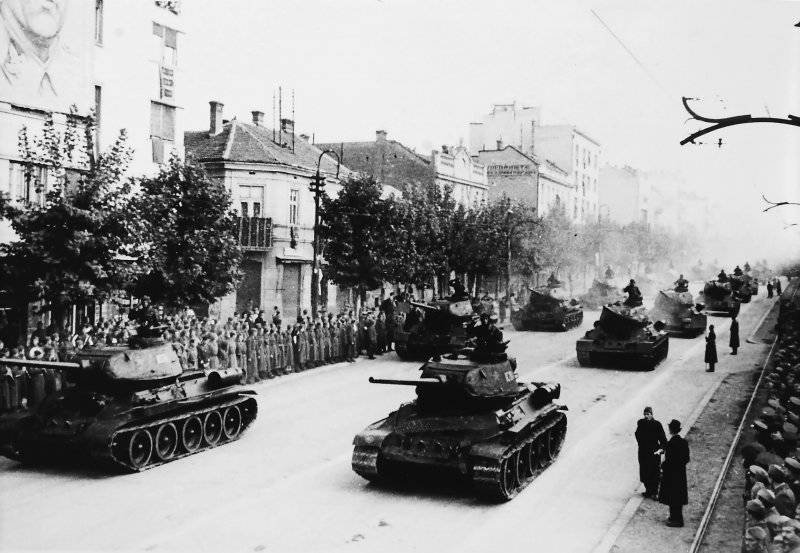
Yugoslavian T-34s, military parade in Belgrade
What followed was a relatively standard sovietization model of forced nationalizations, monetary reforms and opposition persecution, but also the federalization of the country with its nations becoming formally equal. This process helped calming the tensions practically until the breakup of the country four decades later – to a degree, at least. But the important part was – the Yugoslavs did all that alone, without the help of the Soviets. Additionally, Tito, emboldened by his successes, enacted his own policies when it came to Albania, Italy or Greece.
Stalin did not take kindly to not being obeyed or consulted, resulting in the well-known Yugoslav-Soviet split of 1948 and putting Yugoslavia under a lot of political pressure. But, much to his confusion, Stalin found out that, unlike in the other communist countries, he could not muster enough power to bring Yugoslavia in line, resulting in one of the first Soviet post-war political defeats. The Yugoslavs saw these attempts as a grave insult, bitterly rejecting Stalin’s attempts.
This event marked the beginning of the long strained relationship with the Soviet Union and the emphasis on independence. Yugoslavia would participate in building communism along with the Soviets, but they’d do it their own way. Plus, it opened the door for more negotiations with the West, which saw it as an opportunity to erode the Soviet bloc, resulting in a series of offers along with various help shipments – and not just economical ones, Yugoslavia managed to get their hands on surplus American armored vehicles as well, for example. This is how vehicles such as M4 Sherman (630 in total), M47 Patton (319), M36 (known as the Jackson, 399 imported) and M18 Hellcat (240) ended up in the Balkans – as a military aid package in case the Soviets tried to invade.
These tanks were at the beginning of what became a very curious collection of foreign and indigenous vehicles the Yugoslav People’s Army would end up operating. They also served well past their prime and would be used decades later during the Civil War. The Shermans were officially in service until 1973, the Pattons until 1988 (by which time they were incredibly obsolete).
The Yugoslav engineers were very resourceful – they managed from the late 1940s to the early 1960s, partially using reverse engineering, to build tanks that were roughly on par with the T-34 and T-54, quite a feat for someone with almost no previous experience (even though the ultimate result was generally worse than its Soviet counterpart and also considerably more expensive to mass-produce). They also eventually attempted to modernize the Sherman tanks by replacing the original engines with the ones used in their T-34s, but that did little to improve the tank’s combat value.

Vozilo A, a Yugoslavian attempt to build its own T-34 copy
Even though the split is often mentioned to have finally ended shortly after Stalin’s death in 1953, the reality was far more complex. For one, the Soviets did not make it very easy and the rabid anti-Yugoslav propaganda of the early 1950s was hard to forget. Tito was also a very shrewd politician and saw an opportunity in balancing between the West and the East. It was a bold strategy that paid off for a time – these loans along with the other steps to liberalize the economy helped to improve the conditions the citizens were living in and to industrialize the country at the same time – between 1955 and 1965, for example, the gross national product of Yugoslavia doubled in value.
However, this sort of balancing also came with a price tag. For the West, the country was still a communist bloc one while, to the Soviets, Yugoslavia was not a reliable ally. In short, neither side would sell really modern weapons. In the mid-1950s, Yugoslavia would receive its first 140 T-54 tanks, but these could hardly be considered cutting edge at the time and by the end of the decade, Yugoslavia also purchased some SU-100 self-propelled guns (likely from Czechoslovakia) along with some other aging equipment.
This wasn’t that big of a deal in the 1950s and the 1960s but when the 1970s came, the technology gap became more and more pronounced. After all, designing a guided missile or electronic equipment was not like designing something as (relatively) simple as a WW2 era firearm or tank. This resulted in some rather odd measures – for example, in 1966, when the entire East was getting rid of the old T-34s, Yugoslavia purchased around 600 of these vehicles from the Soviet Union and in the late 1970s, Yugoslavia still had over a thousand of these venerable vehicles in active service. What is even stranger is the fact that some of these vehicles saw actual combat – 10 of them were sent to Angola.
Either way, this decision was driven mostly by the ability of the Yugoslavian industry to maintain these vehicles rather than their combat value. Yugoslavia also imported between 1600 and 1980 (sources vary) T-54 and T-55 tanks from Poland, Czechoslovakia and the Soviet Union itself. These remained the mainstay of the Yugoslavian armored forces until the appearance of M-84, but that is a story for another time. In the 1960s and 1970s, when it came to modern military equipment, Yugoslavia was, more or less, on its own.
The situation with APCs was, to a large degree, analogical to the one with tanks. By the end of the 1950s, Yugoslavia had a rather odd assortment of various obsolete halftracks (mostly the American M3s, around 100 of which came in along with the tanks) in service with various older Soviet vehicles such as the BTR-152 being purchased in relatively small numbers.
This was in fact more serious an issue than usual, not having proper tracked APCs. Yugoslavia had a lot of mountainous areas where the off-road capabilities of tracked vehicles were essential. The BTR-152, for example, was never really great to begin with but the harsh terrain it had to contend with only multiplied its issues. At the same time, the military was not blind to the success of the American tracked APCs and they decided they wanted an indigenous vehicle of that kind as well.
The result was the M-60 series troop carrier. The design works started in the mid-1950s and the first prototype was built in 1958 with the vehicle entering service in 1962. Around 790 were built between 1962 and 1979, some two hundred ended up being allegedly exported to Iraq (all of them were lost since) and the last vehicles were phased out of Serbian service in 2004 or so.
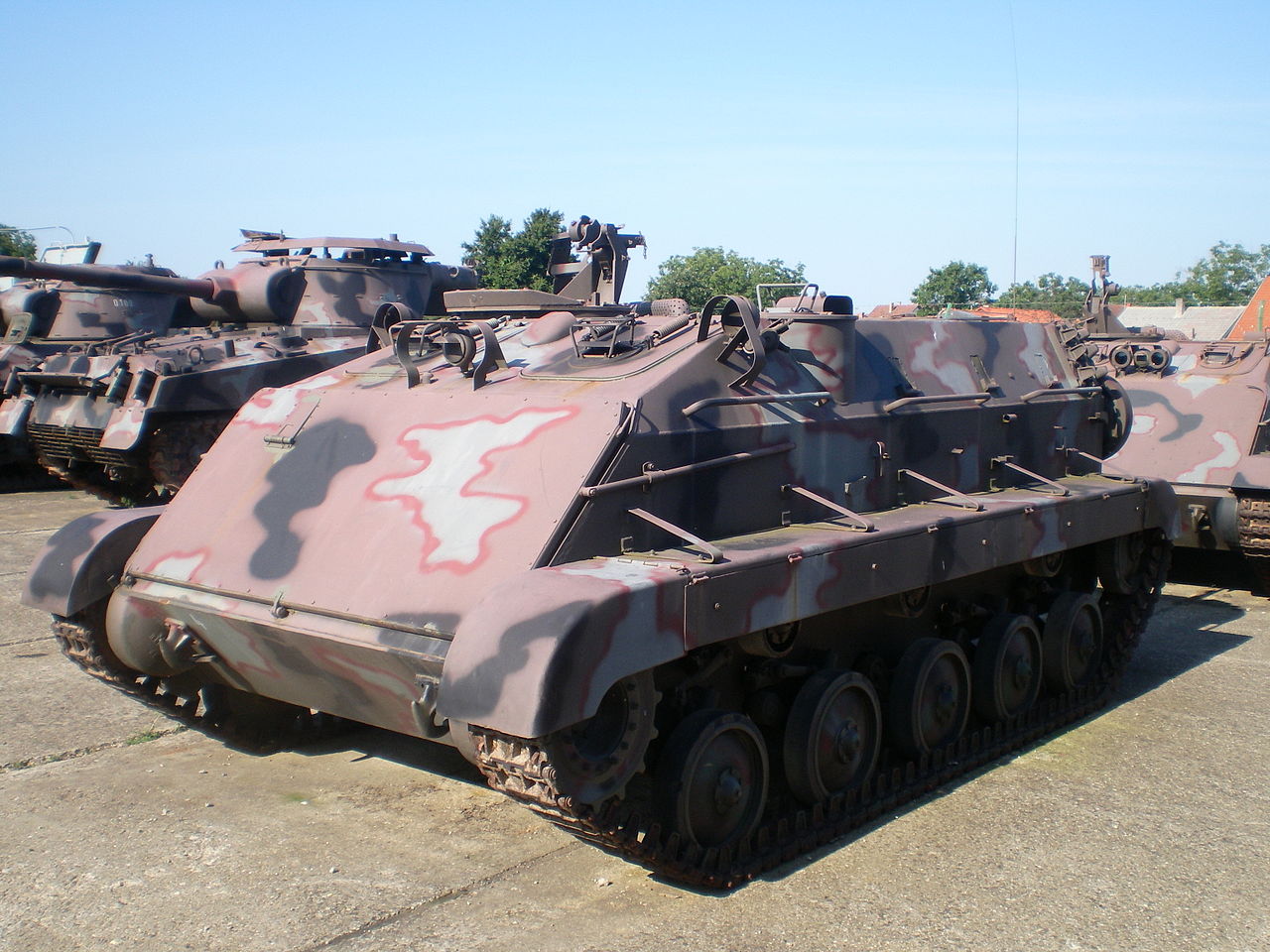
M-60P APC
Overall, it wasn’t really a groundbreaking design. It was a big box with some basic sloped anti-bullet steel armor, protecting the vehicle frontally from heavy machineguns (but little else). The vehicle had no NBC protection and only very rudimentary night-fighting capabilities. The design was allegedly inspired was the American M59 APC, the predecessor to the M113. This vehicle was remarkable for two reasons:
- The fact that Yugoslavia managed to set up its mass-production at all
- The choice of its design components
The vehicle was powered copy of a six-cylinder 150hp Austrian Steyr engine, the design of which got to Yugoslavia along with the production of a copy of the Hungarian K-800 tractor that used it as well. The actual reasons why this engine was used are not known to the author of this article – it’s, however, likely that its production was already established, it was cheap and easy to repair. Its mediocre output, however, allowed the vehicle to only go as fast as 45 km/h.
Another rather odd component choice was its suspension that was copied from the SU-76 SPGs the Yugoslavs had acquired in 1947. Why this particular model was selected is another interesting question – likely because it was rather rugged and easy to produce. To top off its international character, the main weapons of the vehicle were an American .50 caliber Browning M2 HMG and a Yugoslavian copy of the wartime German MG42 machinegun. In this sense, the vehicle itself was a small-scale image of the Yugoslavian military of its time. Nevertheless, it did its job.
In the 1960s, more Soviet vehicles started arriving in Yugoslavia, albeit in limited amounts and of dubious quality. The Vietnam War showed the vulnerability of tracked APCs in full, putting the “battle taxi” doctrine in doubt. Everything changed with the arrival of the Soviet BMP-1 IFV – the Yugoslavs decided they absolutely, positively needed an indigenous IFV of their own and that’s how the M-80/M-80A series came to be.

BVP M-80A1
The development of the M-80 IFV started around 1969 and the first prototype was ready in 1974. A year later, the vehicle was first shown to public during the May military parade in Belgrade, but the actual mass production did not start until 1979. Only few vehicles of the initial pattern were made before it was replaced in 1980 by a slightly larger variant with a different engine called M-80A. Let’s talk a bit more about that one.
At first glance, the vehicle resembles a bloated BMP-2, but looks can be deceiving – while influenced by it, it is quite a different design that has more in common with, of all things, AMX-10P. Much like its predecessor, it is a mash-up of different solutions. It has a crew of three men (commander, gunner and loader) with the driver located on the left side of the hull, sitting next to the vehicle’s engine.
The vehicle is made of steel (some sources incorrectly claim aluminum) with the sloped front being approximately 14mm thick, providing enough protection to withstand the fire of 20mm autocannons, certainly an upgrade over the M-60. The sides, however, only provide protection against small arms (specifically 7.62mm AP bullets at 100 meters). The crew and passengers are also protected by a NBC system, an automatic fire extinguisher and a smoke generator.

SPAT 30/2, an anti-aircraft version of the BVP M-80A
The M-80A weighs 13.85 tons (the weight changes a bit depending on the variant) and is powered by a Yugoslavian copy of a Mercedes Benz engine – the FAMOS 10V003 15.95 liter V10 diesel producing 315hp and allowing the vehicle to go as fast as 65 km/h. The transmission is manual. It’s worth noting that the M-80A is also amphibious – it has, however, no dedicated propellers and relies on its tracks alone for propulsion. The suspension is based on the AMX-10P and the older M-60 model, consisting of five roadwheels with individual torsion bars with the front-most and the rear-most wheel having shock absorbers.
The armament is another interesting element of the vehicle – it has a rather small turret armed with a license-produced version of 20mm Hispano-Suiza HS 804 autocannon and a twin Malyutka missile launcher. The autocannon can engage flying targets as well as ground ones – it’s clear that the Yugoslavs were solving the same issues the Soviets were and wanted their IFVs to be able to engage helicopters. The autocannon was, however, considerably weaker than the 30mm gun the Soviets used.
Despite this handicap, the M-80A (officially entering service in 1982) was a rather potent AFV that was produced until the collapse of Yugoslavia. It was never exported, although after the country’s split, many were passed down to the successor states with most of them ending up in Croatia and Serbia. It did participate in much of the Yugoslav Wars fighting and, although its performance is a bit hard to track, it seems to have performed on par with the BMP-1. By now, however, the original BVP M-80A model is quite obsolete. To make it competitive in Armored Warfare, we’ll include several of its upgrades and variants.
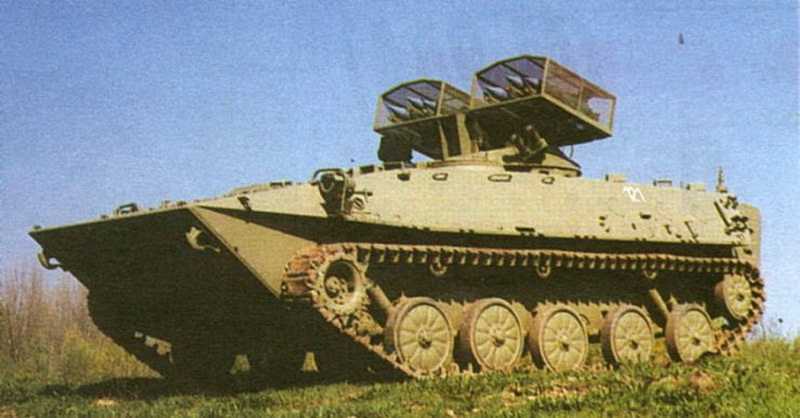
M83 turret on the M-80A LT (also called M92), an anti-tank version of the BVP M-80A
In Armored Warfare, the BVP M-80A will be a Tier 5 Premium Armored Fighting Vehicle. Like its Tier suggests, the M-80A will be a tracked vehicle roughly on par with the BMP-2 in performance. The basic hull will be sloped but also quite fragile just like the BMP series has with the mobility being slightly worse than that of the BMP-1P. Its biggest advantage will, however, be the option to configure it depending on what play style you prefer.
You see, the M-80A will be available with three different weapon systems (turrets) that you will be able to choose from.
The first option is the M-80/98A turret with a combination of a 30mm Zastava M86 L/70 autocannon (similar in performance to the Russian 2A72) and a Malyutka missile launcher. With this weapon system, the vehicle is sometimes referred to as M-80A1 Vidra. This is a 2004 upgrade, which means the turret will feature modern electronics, optics and an accurate FCS, making it the best choice for pure scouting. The Malyutka launcher will be a twin one too and will be able to launch both missiles in quick succession (albeit not at once).
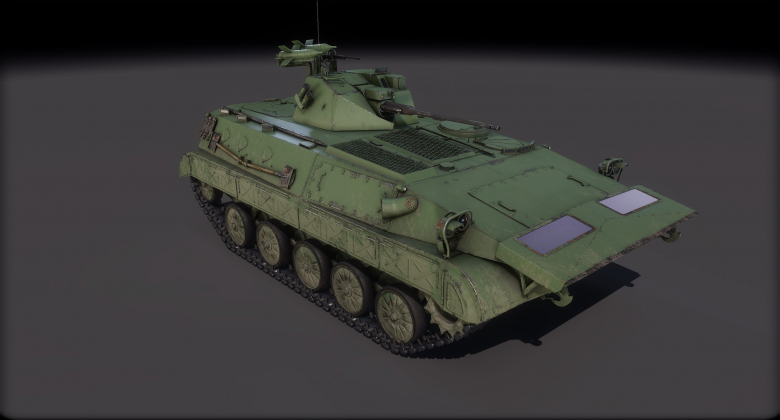
The second option is the Foka turret, which is an anti-aircraft turret with two 30mm Zastava autocannons. This M-80A variant is also sometimes called SPAT 30/2. In this configuration, the vehicle will not have the spotting capabilities of the 80/98A turret, but this downside will be compensated by a very high damage per minute and rate of fire value of both autocannons. Its play style will resemble that of the AMX-13 DCA, but without the special radar ability, resulting in a short-to-mid range fire support platform capable of laying down withering torrents of fire.
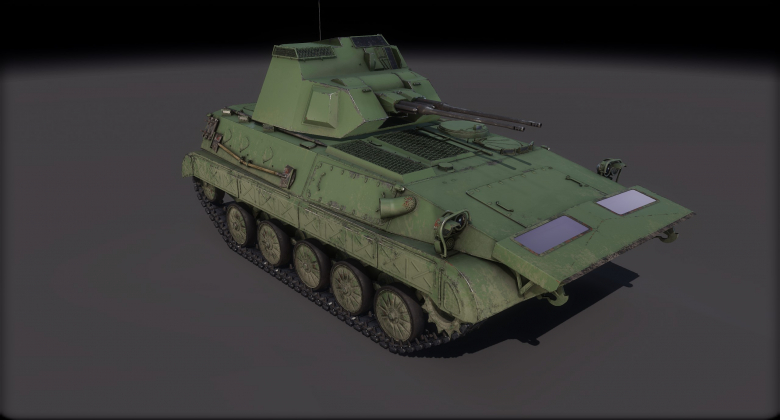
And, finally, there’s the M83 turret, which is the polar opposite of the Foka. This is a dedicated tank hunter variant, replacing the autocannon with a launcher for six Malyutka missiles that can be fired with only a short delay between shots. This option will turn the vehicle into a mid-to-long range tank killer, devastating its targets with well-placed missiles.
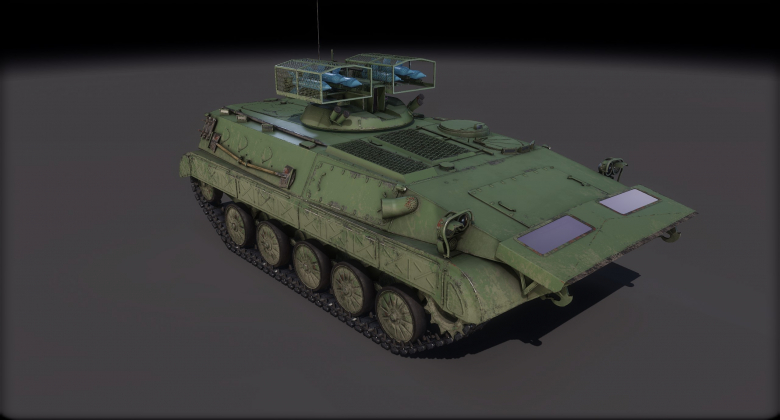
We hope that you will enjoy this vehicle.
See you on the battlefield!








